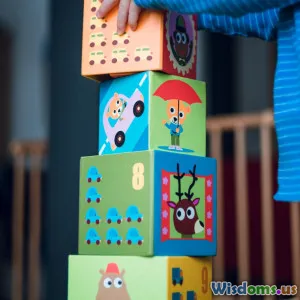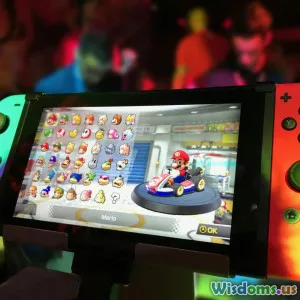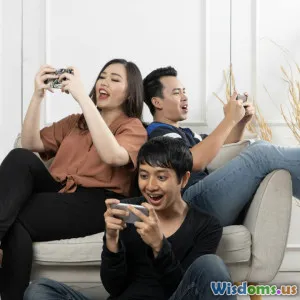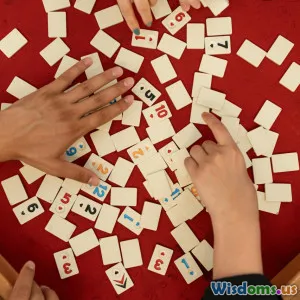
Exploring Gender Representation in Gaming
8 min read A deep dive into gender representation in gaming, analyzing progress, challenges, and path forward. (0 Reviews)
Exploring Gender Representation in Gaming
The world of gaming has transformed dramatically over the past few decades—from pixelated heroes fighting ghosts to vast, immersive worlds populated by complex characters. Yet, beneath this evolution lies a persistent challenge: gender representation. How are genders portrayed in games, and what does this mean for players, creators, and society as a whole?
The Genesis of Gender Representation in Gaming
Early video games, such as Donkey Kong (1981) and Pac-Man (1980), centered predominantly on male protagonists. Female characters were often relegated to damsels in distress — think of Princess Peach in Super Mario Bros. (1985). This portrayal reflected societal norms and consumer perceptions of gaming, considered primarily a male pastime.
By the 1990s and early 2000s, as technology advanced and the gaming audience expanded, developers began to introduce more diverse characters. However, female characters were still often designed with exaggerated sexual features and stereotypical roles. According to a 2015 study by the University of Southern California, women represented only 4% of lead characters in video games, and much of that portrayal rested on harmful stereotypes.
Progress and Positive Shifts
Thankfully, the landscape has started to shift. Indie games and major studios alike showcase increasingly nuanced female and non-binary characters that break from conventions. Titles such as Horizon Zero Dawn feature Aloy, a skilled hunter and protagonist with depth and agency, unshackled from the traditional 'male savior' trope.
Nintendo’s The Legend of Zelda: Breath of the Wild (2017) offers Princess Zelda as a wise and proactive figure involved in saving the world, subverting the classic 'damsel' archetype.
Representation doesn't stop at female characters; games like Celeste (2018) address themes around mental health and identity, providing a platform for marginalized voices, including the LGBTQ+ community. These narratives engage players beyond gameplay mechanics, encouraging empathy and social awareness.
The Impact of Representation on Players
Representation matters because games are interactive stories that can influence perceptions and aspirations. For young players, seeing relatable characters fosters positive self-image and inclusion. For instance, a 2021 survey by the Entertainment Software Association (ESA) highlighted that 41% of gamers identify as female, signaling that the audience itself is varied and craving authentic representation.
Moreover, diverse character portrayals can challenge traditional gender norms and encourage critical thinking. They foster communities where all gamers feel validated and empowered. It also sparks innovation in storytelling and gameplay that appeals to a broader audience, ultimately benefiting the industry financially and culturally.
Ongoing Challenges in Gender Representation
Despite progress, there are significant hurdles. Industry demographics reveal a male majority among game developers. According to the International Game Developers Association (IGDA) 2022 Developer Satisfaction Survey, only 19% of developers identify as female. This imbalance influences the types and qualities of stories told.
Sexualization and objectification remain issues in some mainstream games. While games like Overwatch introduce diverse and strong characters like Tracer and Zarya, others have faced criticism for leaning on stereotypical or hypersexualized female figures, such as certain character designs in Dead or Alive and Tekken series.
Furthermore, the gaming community itself has had a history of toxic behaviors, including harassment targeting female gamers. Movements like #GamerGate in 2014 spotlighted the industry's struggles with inclusiveness and respect.
Industry and Community Efforts to Foster Inclusion
Several initiatives are driving change. Programs like Girls Make Games and Women in Games International offer opportunities and mentorship for women aspiring to enter development roles. Big studios increasingly include diversity and inclusion teams to ensure sensitive and authentic storytelling.
On the community front, platforms such as Twitch and YouTube have helped diverse creators build audiences and challenge toxic cultures. Developers are engaging with players for feedback to shape characters and narratives that resonate authentically.
AAA games are beginning to include customization options allowing players to choose or create characters reflective of their identities, embracing player agency.
The Road Ahead: Toward Truly Inclusive Gaming
The quest for gender inclusivity in gaming isn’t merely about numbers or tokenism; it’s an evolving cultural conversation about respect, complexity, and authenticity. Advancements in technology like virtual reality will amplify immersive storytelling, offering new dimensions for representing multifaceted identities.
Inclusive game design will require:
- Expanded creative teams that mirror player diversity
- Narrative diversity that challenges conventional gender roles
- Ongoing dialogue between developers and communities
- Policies combating harassment and fostering safe spaces
When players find genuine representation, games transcend entertainment—they become powerful tools in shaping social perspectives.
Conclusion
Gender representation in gaming reflects broader societal changes but also acts as a catalyst for further evolution. While past portrayals leaned heavily on stereotypes, the surge of diverse voices within the industry and player base is transforming that narrative. From heroines like Aloy to community-driven content challenging norms, games today present a unique blend of art, culture, and technology that can shape inclusive futures.
For anyone passionate about games—and their cultural impact—their role in this journey towards inclusivity is crucial. By supporting diverse creators, advocating for respectful representation, and challenging outdated norms, gamers and developers alike can help forge a vibrant gaming landscape where everyone feels seen and valued.
References:
- USC Annenberg Inclusion Initiative, "Inequality Across 1,300 Popular Video Games", 2015
- Entertainment Software Association, "2021 Essential Facts About the Video Game Industry"
- IGDA Developer Satisfaction Survey, 2022
- Horizon Zero Dawn (Guerrilla Games, 2017)
- Celeste (Matt Makes Games, 2018)
- Studies on gender representation and toxicity in gaming communities
By understanding and championing gender representation in games, we open the doors to richer stories and a more inclusive digital world.
Rate the Post
User Reviews
Popular Posts




















